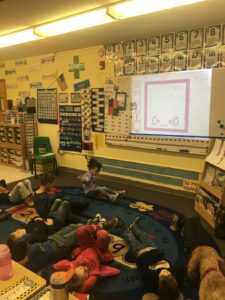La lectura
We all really enjoyed reading the well-known story of Medio Pollito. This story tells about how a chick was born with only one leg, one wing, and one eye – a half-chicken. Medio-Pollito decides to go to the castle, because he’s so important, and along the way he helps the water, fire, and wind get out of tricky situations. When he arrives at the castle he is able to ask for a return favor from all three elements and this is how the Medio-Pollito came to be the weather vane we see atop barns and other buildings.
Our weekly objectives were to:
- listen carefully during a directed drawing.
- recall the order of events from our story
- illustrate the important elements from our story
- groups 1-2: write the beginning sound of spoken words (dictation)
- groups 3-4: write the beginning syllable of spoken words.
Las matemáticas
This week we started our new unit on numbers 12-16. Students are all easily able to count up to 16 in Spanish but we are looking for them to have automaticity in their number recognition in Spanish. We are also working on forming numbers up to 16, identifying how many tens and how many ones are needed. We are doing this with various activities.
Here is a fun number recognition game (in Spanish).
https://pbskids.org/curiousgeorge/busyday/span_apples/
Many Spanish math games can be selected on the main page (most are skills we are working on).
https://pbskids.org/curiousgeorge/busyday/span_index.html
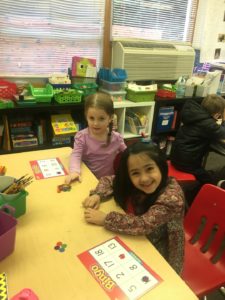 Bingo is a great way to work on number identification. It was also a very fun way to start our day on Friday!
Bingo is a great way to work on number identification. It was also a very fun way to start our day on Friday!
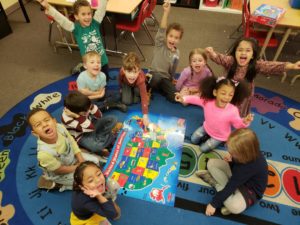 History & Geography
History & Geography
This week in our social studies unit we l began to learn about presidents past and present. We started off the week by reading about Washington DC. We found where it was located on a map. We learned a little about the government and its federal buildings, as well as important monuments and memorials located in the city. The class took a virtual 360 tour of our nation’s capital on Tuesday. We also learned about George Washington as a young man and general this week.
Our objectives this week were:
• find Washington, DC on a map
• recognize the White House as the president’s home
• describe Washington, DC, as a city where the current president lives and where monuments of past presidents can be found
• identify the American flag
• describe the difference between a president and a king
• name George Washington as someone admired for his honesty
• understand that the cherry tree story is a legend
• describe George Washington as a general who fought for American independence
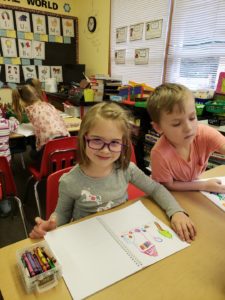 • recognize that General Washington led his army to victory even though his army was smaller than the English army
• recognize that General Washington led his army to victory even though his army was smaller than the English army
Science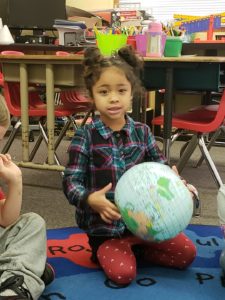
We have begun our next science domain, Seasons and Weather. In this domain students will be learning about the concept of weather and what different regions of the Earth’s weather is like. Students will learn to think about a year as in terms of weather that falls into patterns of four seasons. This week we made a piece of art that showed a tree going through the cycle of the four seasons, we observed weather outside our classroom, and we colored a map showing weather temperatures in different regions of the world.
Our objectives were to:
• demonstrate understanding of the following units of time and their relationship to one another: day, week, month, year
• name the four seasons in cyclical order, as experienced in the United States, and correctly name a few characteristics of each season
• characterize winter as generally the coldest season, summer is generally the warmest season, and spring and autumn as transitional seasons
• draw pictures that show an understanding of each season
• characterize the North and South Poles as always cold in temperature, the middle section the earth as usually warm, and the United States as having four seasons
• describe daily weather conditions of their own locality in terms of temperature, cloud cover, and precipitation
• identify ways that weather affects daily routines, such as dress, activities, etc
• identify a thermometer as an instrument used to measure temperature and describe how it works
Specialists:
Character Education with Ms. Jennie
This month in character ed we are focusing on the theme of Self-Control. We are talking about how to have self-control over our bodies, our words, and our emotions – pretty important all through life! This week we read Personal Space Camp which discusses how we all have a personal space bubble and need to respect other people’s personal space. We will also be reading My Mouth is a Volcano and When Sophie Gets Really, Really Angry. Our quote is: Self Control: Stop. Think. What could happen if you act that way? Is that what you want? –Anonymous. And for our poem we are reading The Red Wheelbarrow by William Carlos Williams – a sweet, short poem everyone can memorize.

